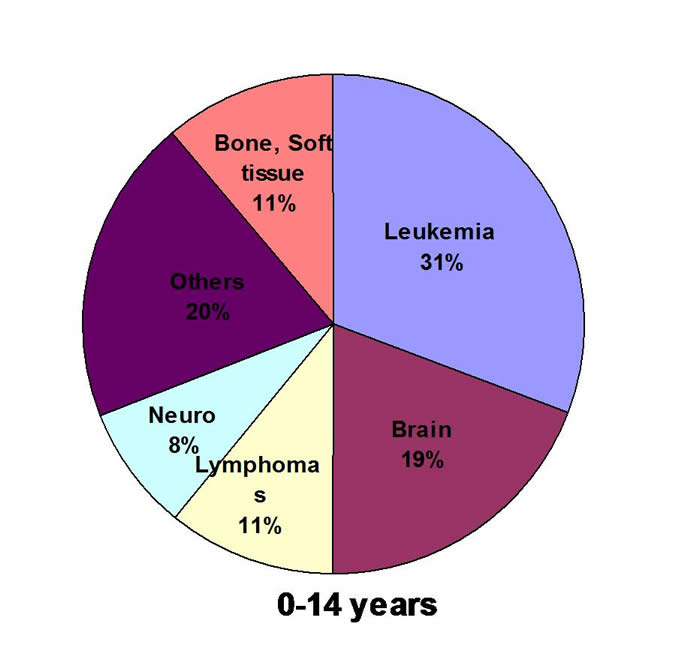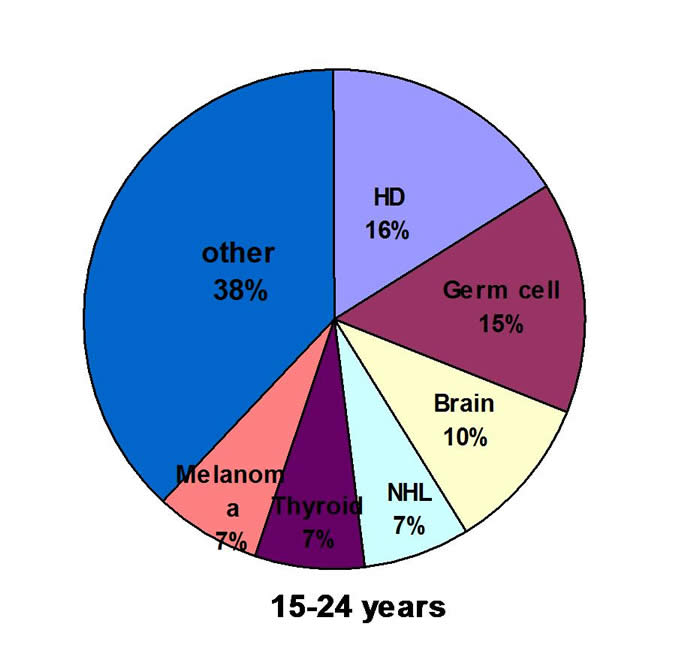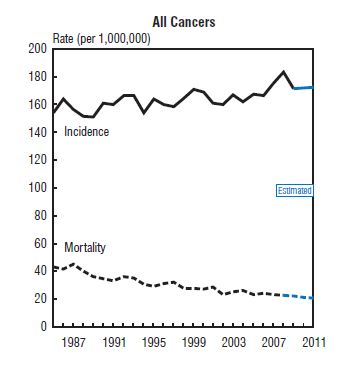Epidemiology is the study of the incidence and cause of health problems in populations.
It describes the distribution and determinants of disease and other health related problems within defined human populations.
In North America there has been an excellent cancer surveillance system since 1973 which is funded and coordinated by the National Cancer Institute.
It is called Surveillance Epidemiology and End Results (SEER) program.
Here's the link: SEER
SEER gives information about cancer incidence and survival in the population as a whole and in demographic subgroups. The data is used by researchers investigating the etiology and treatment of cancer.
Childhood cancer is relatively uncommon and affects 1 in 7000 children aged 14 years and younger in North America annually. Despite the rarity - 12400 children and adolescents will be diagnosed with cancer annually in the US alone.
Cancer is the leading natural cause of death among children between the ages of 1 and 14. The mortality rate from childhood cancer is approx 3 deaths per 100,000 population per year.
Link:
National Cancer Institute Fact Sheet about the incidence of childhood cancer in the United States.
In Canada :
Childhood cancers are relatively rare and occur in only 12 children out of every 100,000 per year. This means in British Columbia about 130 to 150 children are diagnosed with cancer each year.
In Canada, the average age-standardised incidence rate for childhood cancer is 153 cases per 1,000,000 children; Average age-standardised mortality rate is 26 cases per 1,000,000 children.
Of these newly diagnosed cases:
- Leukemia most common (33%) of all
- Brain tumors 20%
- Lymphomas 11%
There has been little change in the age standardized incidence of childhood cancers since 1985 in Canada.
Please see: Public Health Agency of Canada (Cancer in Children in Canada)
The relative incidence of different types of cancer depends on the age of the child:
Neonates most commonly have teratomas, retinoblastomas, rhabdomyosarcoma and neuroblastoma.
Children between 1 and 14 years of age will most commonly have leukemias, brain tumors and lymphomas. Below is a diagram to show incidences of different cancers up to age 14:

Children older than 14 years will most commonly have lymphomas, epithelial tumors (carcinomas which are very rarely seen in younger children) and bone tumors. Below is a diagram to show the incidence of different cancers in young people between the ages of 15 and 24 years.

The mortality rate from cancer has fallen dramatically in the last 20 to 30 years in "developed" countries such as North America and Europe. Now at least 80 - 90% of pediatric cancer patients can expect to be cured of their disease.
Though childhood cancer accounts for a very small proportion of all human cancers (1% of all cancers diagnosed in Canada), this disease has a disproportionate effect on the economy and population health.
For all childhood cancers combined in Canada, the age standardized mortality has declined significantly:
- In 1985 it was 41.2 per million children
- In 2009 it will be 20.6 per million children
Age-Standardized Incidence and Mortality Rates for All Cancers in Children and Youth (0–19 Years), Canada, 1985–2011:

Survivors after treatment for childhood cancer have significant long term health risks:
- Two thirds will have at least one chronic or late occurring health problem from their cancer treatment.
- Up to one third of these late effects will be major, serious or life threatening
The change in survival rates has been most dramatic for acute lymphoblastic leukemia in children less than 15 years old. This was an incurable disease in the early 1960s and now the 5 year survival rate is at least 80 - 90%.
This is largely due to the efforts of large cooperative groups like the Children's Oncology Group. This large North American group has striven to improve the outcome for children with cancer using multi-institutional studies. Here's the link to their site:

